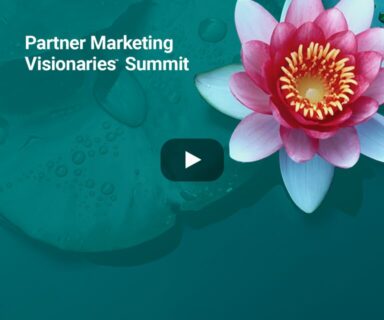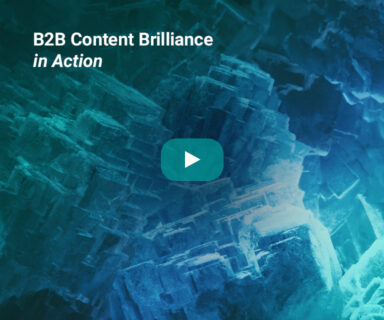- December 20, 2018
- Content, Demand Generation, Intent Data
How to Write Emails B2B Tech Buyers Actually Want to Read
 Over the past two decades, TechTarget has tested millions of emails to our audience, helping us understand exactly what gets them to engage. These are the same technology buyers that Priority Engine provides you access to for your own email campaigns.
Over the past two decades, TechTarget has tested millions of emails to our audience, helping us understand exactly what gets them to engage. These are the same technology buyers that Priority Engine provides you access to for your own email campaigns.
So then what can you do to get tech buyers to actually open and click?
We have distilled our lessons learned over the years into five email best practices to help you better engage tech buyer audiences:
1 – Know your audience
There are only two outcomes from emails that don’t address their audience expertly: deletes and unsubscribes.
The TechTarget audience consists of highly technical to broad business professionals in the B2B space, each with unique motivations and characteristics. When crafting your message keep in mind the following insights about our audience:
When speaking to a technical audience you need to offer a solution, not an interruption. Technical audiences want contextual comparisons to other approaches, solutions, or the status quo. Tech people don’t respond well to language that is “cute”, so don’t be too clever for your own good.
- IT Professionals are:
- Risk-averse, skeptical, and literal
- Underappreciated and put-upon
- Concerned about budgets and schedules
- Concerned about negative visibility
- Busy with lots on their to-do lists
- More worried about avoiding problems and mistakes than seeking opportunities
- IT Professionals care about:
- Ways to improve their job and alleviate everyday responsibilities
- Keeping things up and running (avoiding downtime)
- Avoiding mistakes
- Getting things done on time and under budget
- Avoiding falling behind (rather than getting ahead)
- Making things run faster
- Simplifying or automating complex processes
- Saving time/money
- Finding shortcuts
- Getting more out of their existing infrastructure
- Implementing new technologies quickly, easily, and without disruption
- Maximizing reuse and minimizing reworking/replacement
- Implementing solutions that will scale and stand the test of time
- Minimizing interoperability or compatibility issues
When speaking to a higher level audience their primary objectives are to drive business objectives through IT and oversee technology investment decisions. All decisions are made to benefit the business. Management audiences require more broad business benefit focused material.
- What upper management cares about:
- Management methodologies and strategies
- Peer examples and social proof
- Novel frameworks
- Technologies that cut costs
- Meeting and exceeding business goals
- Beating the competition
- Helping the CEO compete without drastic spend increases
- Creating new revenue streams for the business
- Increasing efficiency, productivity, automation
- Improving IT and business alignment
- Generating or increasing revenue from investments (ROI)
TechTarget Priority Engine can help you further understand your audience by filtering your lists on a number of attributes to help you better target your audience and customize your messaging.
Key attributes we recommend understanding about your audience:
- Where are they in their buyer’s journey?
- Do they already know about your brand or products?
- What is their level of seniority?
- What size company are they?
- What are their topical interests?
- Have they been engaging with other vendors? Which ones?
- What technologies are they already using as they relate to your products?
2 – Open strong if you want to get email opens
The sole purpose of the subject line is to stand out in a crowded space. It needs to be unique, short, catchy, urgent, specific, and descriptive. No problem, right? Subject lines are notorious for being one of the most challenging parts of an email to get right.
Use the following methods to help enhance your subject lines:
- Assume the recipient will only read the first five words of your subject line, and keep it to ten words at the maximum
- Use numbers when applicable i.e. 10 tips, 5 ways, 3 things to avoid etc.
- Give them an action item right up front. For example: “Improve ROI with these expert tips”, “Increase your adoption rates”, “Accelerate pipeline conversion” etc.
- Wait until after you’ve written the body before approaching the subject line
- Use “vs.” for comparisons of companies, strategies, etc.
- Use “101” for a general introduction or an overview of a topic
- Avoid sounding too “pitchy” or “salesy” – use consultative language
- Dodge the spam filter by avoiding potential trigger words. Here is a list of common spam trigger words to avoid.
Here are some examples of subject line formats that consistently outperform against the TechTarget audience:
- 3 technology trends your business needs to watch
- Vendor Report Card: We rate the top 10 automation tools, features, and functions
- Benefits of scale-out storage initiatives, and the obstacles to avoid
- Maximize your ROI: How to get the most out of your cloud provider
- Simplify desktop management with cost-cutting VDI strategies
- 5 most commonly overlooked IT automation mistakes
- ‘Big Data’ breakthrough: New healthcare platform takes the pain out of data analytics
- Building a cloud-optimized network: An architectural blueprint for the virtualized data center
- Conquer the security challenges posed by virtualization
3 – Make it about them, not you
Ask yourself: Why am I sending this email?
If the answer is focused on your goals you may be headed in a dangerous direction. Goals for a campaign should be determined long before you are writing your email.
When you sit down to write an email, your sole focus should be on how you can help your prospects do their jobs better. Consultative approaches are highly effective with the B2B tech audience with expert tips, best practices, and lessons being of great interest to them.
TechTarget copywriters use these guiding principals to get started on their copy:
- What is one major problem my target faces that I can address?
- What is my target most threatened by and can I help them feel more secure?
- Which topic makes the largest impact on my targets business and can I offer insight?
- How will I help them save time, money, or effort?
- Be conversational – always write as if you are talking directly to one person.
- Keep it simple and get to the point.
4 – Always write in terms of the offer
The offer is a critical element in every email campaign. The rest of your email copy is really just pretty wrapping paper on the gift you are giving them. Just like a sales pitch, you have a negligible amount of time to connect with your audience and the offer is the one nugget you want them to remember.
Keep these methods in mind as you craft your offer:
- Make sure the content you are offering matches your audience’s needs.
- Always read/watch/listen to the content you will offer before you write your email to ensure the offer matches the context of your message.
- Be specific about what you are offering. Note the differences in this example:
- Vague – “Outsourced services can deliver great benefits to your enterprise, but can also bring along many risks.”
- Specific – “There are a myriad of benefits for outsourced cloud storage services—cost savings, improved service levels, an enhanced knowledge base—but without proper monitoring tools outsourcing is useless.”
- Don’t give your whole offer away in the email. Balance a sense of intrigue and mystery while sharing enough to establish credibility. Some examples:
- “There are a myriad of benefits for outsourced cloud storage services—cost savings, improved service levels, an enhanced knowledge base—but without proper monitoring tools outsourcing is useless. Read our article “How to Protect What’s Yours – Monitoring Your Cloud Storage” to discover six ways monitoring tools can improve your business and save you from huge headaches down the road.”
- “A recent expert study showed 10 major reasons small businesses are looking to make an ERP investment. Hint: here are 3 now: (provide 3 of the specific reasons)”
- “A recent study by BCG shows that ERP software will be obsolete in 3 years due to advancements in AI. This article from our CTO explains 5 ways to prepare your company to take full advantage of these coming changes.”
- Most of all – resist the urge to write a lot, be brutal in your editing, and keep your copy skimmable so that your offer shines through and the recipient ‘gets it’ in a glance.
5 – Ask for engagement, the right way
The call-to-action (CTA) is an important extension of the offer. After all, it is the vessel by which you actually get the value of your offer into your recipient’s hands, and by which you track engagement. Unfortunately, it is one part that is often done poorly. Here are a few best practices for designing your CTA:
- Use multiple CTAs; one at the top, middle, and bottom, depending on how long the email is.
- Make sure at least one CTA is above the fold and can be seen without scrolling.
- Use language that asks for action and compels a prospect towards it.
- Use an HTML button as one CTA with a contrasting color to your background.
- Never make your CTA part of an image as this will be initially blocked by most email clients.
We hope you can use these five lessons to help you drive even more engagement and demand from your target audience as well as get the most out of any TechTarget programs you run.
B2B demand generation, B2B marketing, email marketing, email marketing tips, improving email response



